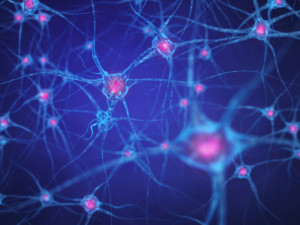
Contents
Amino Acids & Wellbeing
The vital building blocks of life are the organic compounds known as amino acids. They link together to form chains, creating the foundations for peptides and proteins. They also provide an alternative energy source for cells.
After water, amino acids in the form of proteins constitute the largest component of cells, muscles and other tissues within our body. In addition to protein synthesis, amino acids are important for a wide range of physiological processes necessary for optimal body function.
Amino acids are made from a central carbon atom, an amino group (-NH2), a carboxyl group (-COOH) and a side chain. The key components of an amino acid are hydrogen, carbon, nitrogen and oxygen. There can be many different additional elements within the side chain and these variations can help to distinguish between the different amino acids.
Amino Acid Classifications
There are a range of classifications which scientists use to group amino acids. Structurally, scientists divide amino acids based on the location of the amino functional group. This means they are either alpha, beta, gamma or delta. They can also be classified depending on the type of side chain group (acyclic, aromatic, sulphur or hydroxyl-containing, aliphatic), their polarity, and whether they are basic, neutral or acidic.
However, one of the most practical amino acid classifications comes from understanding how we source these vital organic compounds. The common amino acids needed by humans are classified into three categories: essential, non-essential, and conditional or semi-essential.
- Essential amino acids: our body cannot manufacture these, therefore we need to include these amino acids in our diet. There are: leucine, histidine, valine, isoleucine, threonine, lysine, methionine, phenylalanine and tryptophan.
- Non-essential amino acids: the body can manufacture these independently of the dietary intake. They include glutamic acid, alanine, aspartic acid and asparagine.
- Conditional amino acids: these can count as ‘essential’ during periods of stress and illness. They include cysteine, arginine (R), tyrosine, glutamine, serine, proline, ornithine, and glycine.
Additionally, several amino acids are semi-essential for children due to their underdeveloped metabolic pathways. These include tyrosine and cysteine.
By understanding how we obtain amino acids, it is possible to learn how to better support a healthy body and enhance our wellbeing. It also offers an opportunity to help safeguard our body from various diseases.
What Amino Acids Do
Amino acids play many vital roles within our body. Below, we have outlined some of the various functions performed by amino acids.
Protein Formation
Scientists have identified more than five hundred different amino acids within nature. However, only twenty-two are involved in the process by which RNA (derived from DNA) makes protein (known as translation). These types of amino acids are proteinogenic amino acids.
Twenty of these amino acids are common. The body integrates the other two amino acids (pyrrolysine and selenocysteine) into proteins using unique synthetic mechanisms.
Proteinogenic amino acids contribute to structural components of your body. This includes skin, brain, muscle, eyes, hair, and internal organs. Haemoglobin, enzymes, myoglobin, antibodies and many hormones are molecules incorporating proteins. The sequence of amino acids determines the unique structures of the various proteins.
Immune System
 Amino acids play a dual role in our immune system. They help to protect individuals from infections and other illnesses. In addition to this, they help to regulate and moderate over- reactions. These include autoimmunity and inflammation.
Amino acids play a dual role in our immune system. They help to protect individuals from infections and other illnesses. In addition to this, they help to regulate and moderate over- reactions. These include autoimmunity and inflammation.
There are many different amino acids that play a vital role in promoting a healthy immune system. Arginine supplementation can improve cellular immune mechanisms, especially T-cell function. Branch-chained amino acids (leucine, isoleucine and valine) as well as glycine, glutamine, cysteine and theanine, all help to reduce inflammation and boost immunity. These are just a few examples of the many amino acids that help to protect and heal the body.
Antioxidants
These molecules are responsible for stopping the oxidation of other molecules and the production of harmful free radicals. These free radicals damage cells, contribute to aging and increase our susceptibility to disease. There are several important amino acids with antioxidant properties. These include glutathione, lysine, methionine and glycine.
Glutathione is an extremely potent and important antioxidant. It helps to boost the immune system and flush free radicals out of the body. Lysine and methionine are precursors to carnitine, which supports antioxidant activity and boosts mitochondrial function.
 Neurotransmittors
Neurotransmittors
The most abundant neurotransmitters within the brain are amino acids. They are responsible for the majority of fast signalling between neurons. Glutamate and aspartate are particularly important, along with glycine and GABA.
Energy Production
The body can use amino acids as a source of cellular energy. If a protein is no longer required or damaged, it can be converted back to the original amino acid constituents and it can be broken down into molecules for oxidation.
Nitric Oxide
Without the amino acids arginine and citrulline, the body would not be able to produce nitric oxide, or NO. In the absence of this reactive gas, our body would not be able to function.
NO is a critical signalling molecule important in many cellular and physiological processes. These include blood circulation, immune defence and neurotransmission.
Scientists have extensively studied NO and its various properties. It was recognised as the ‘Molecule of the Year’ in 1992 due to its fundamental role in immunology, neuroscience and physiology. Consequently, citrulline and arginine are two vital amino acids necessary to support our body.
Sources of Amino Acids
The body does not store amino acids in the way that it stores excess starch and protein as fat for later use. Consequently, amino acids must be constantly replaced as they are used.
While a large portion of the amino acids we require are produced within the body, essential amino acids need to be sourced elsewhere. Our diet is the best supply of amino acids.
 The richest sources of amino acids are animals. These include foods such as poultry, meat, seafood, dairy and eggs. Plant sources of amino acids are also important, although different plants offer different amino acids. For example, beans are rich in lysine, while grains are lysine poor.
The richest sources of amino acids are animals. These include foods such as poultry, meat, seafood, dairy and eggs. Plant sources of amino acids are also important, although different plants offer different amino acids. For example, beans are rich in lysine, while grains are lysine poor.
To ensure that your body has access to all the necessary amino acids, it is essential to have a balanced diet. Fresh, raw foods are ideal as they maintain a high concentration of amino acids.
Foods that have been frozen and cooked are exposed to cellular damage due to oxidation. This can reduce the nutritional benefits. Highly processed foods are very poor sources of amino acids and should only been consumed in moderation.
It is wise to keep your diet in balance and not to over indulge in one particular amino acid rich food source. While the body can expel surplus amino acids or convert them to energy, a continuous, excessive supply can overwork the kidneys.
This can be problematic for anyone with an impaired kidney function. A sensible, balanced diet will eliminate this problem.
Superfoods
There are a number of foods commonly referred to as ‘superfoods’ due to their rich amino acid content and antioxidant properties. Regularly including these foods in your diet can help to support all the physiological processes needed for the body to properly function.
They will also help to boost the immune system and overall wellbeing. Some of these important foods include legumes, pulses, salmon, spinach, blueberries, broccoli, walnuts, almonds, avocados, green tea, cherries, cranberries, chia seeds, pumpkin seeds, whole grains, and spirulina. This is just a small sample of the many foods that offer great benefits to our body.
Supplements
If you are unable to maintain a regular and balanced diet, supplements may be a good option for you. There are plenty of amino acid supplements available on the market. These can help to ensure that you are getting an adequate supply of essential amino acids and help to support the body during periods of illness or prolonged stress.
If you have any underlying health issues, you should consult a healthcare professional before taking supplements.
Conclusion
When we think about healthy living, certain lifestyle factors come to mind. These include regular exercise and avoiding toxins such as tobacco and excess alcohol. We all know that our diet plays an important role in our wellbeing. However, very few people understand just how vital amino acids are to our health and the array of benefits they offer.
Without amino acids our body would not function properly. Learning how amino acids regulate physiological and pathological processes provides us with an opportunity to promote and maintain a healthy body. We can actively consume certain foods to help improve our immune system, as well as prevent and treat certain diseases.
Additionally we can enhance our energy supply and protein synthesis to build muscles, strength and endurance. We can also stimulate brain function and improve cognitive awareness. Overall amino acids can support and improve our wellbeing.

